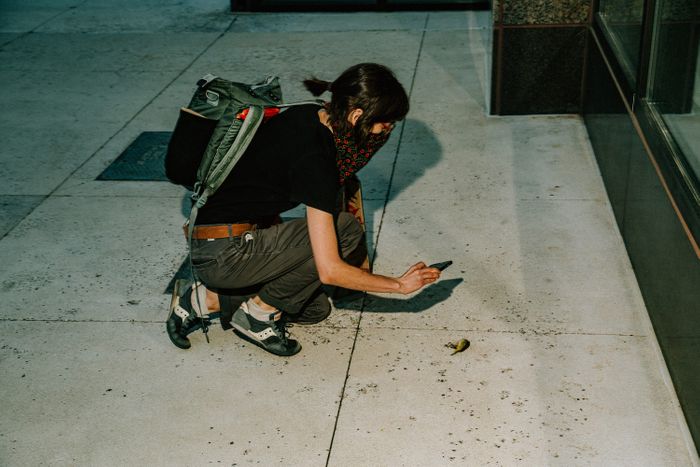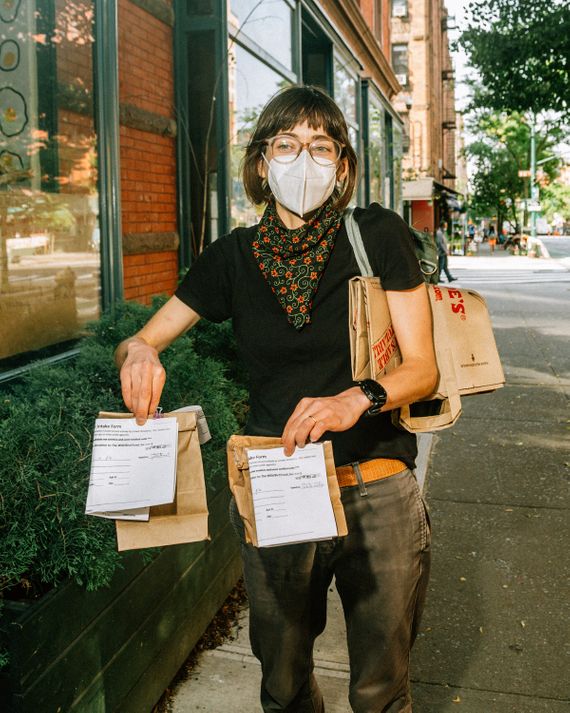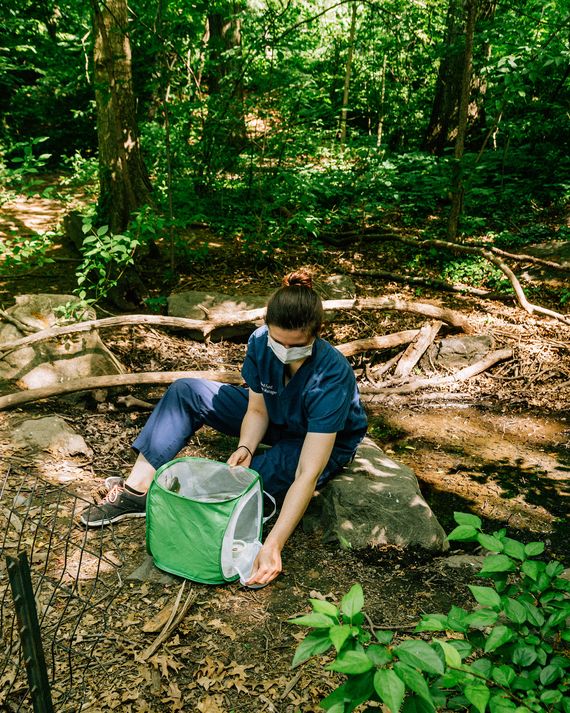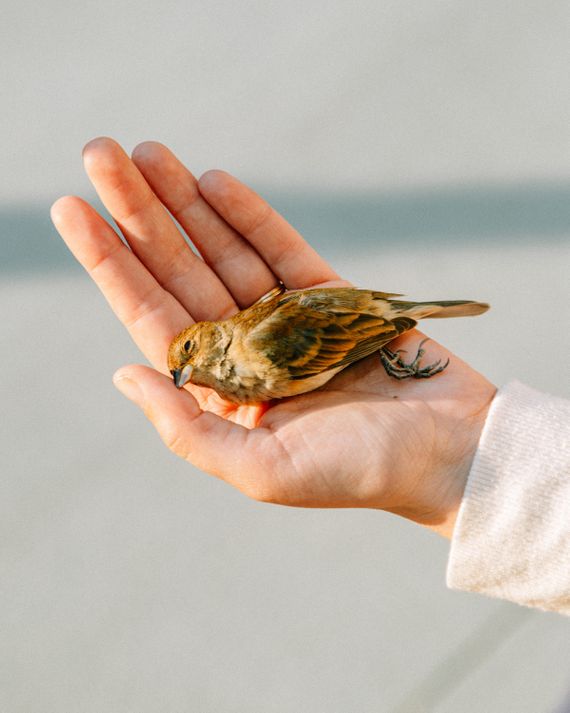
Just after 6 a.m. on a recent Monday, Calista McRae is in downtown Manhattan, walking a digressive loop through the morning mist from 4 World Trade Center to 1 World Trade Center to Brookfield Place and back around. McRae is 34, with a springy and fast step, and she will repeat this journey until 9 a.m. and return nearly every day during the spring and fall bird-migration seasons. She’s carrying two shopping bags, the larger of which is a FreshDirect tote printed with images of fruit and the phrase “This Summer, Life Is Peachy.” As we walk, we hear a little rustle coming from the big bag. “That’s a good sound,” she says.
McRae is one of about 30 New York City Audubon volunteers who search for injured and dead birds in the city’s commercial centers. They are part of the group’s Project Safe Flight, tallying injuries and fatalities and documenting particularly dangerous spots. In doing so, McRae and others rescue birds that have collided with tall buildings’ reflective glass surfaces — tending to the injured, scooping up the dead. A few minutes earlier she had come across a black-and-white warbler on the ground, stunned but alive, and that’s the source of the noise in her tote. She’d gently put it into its own tiny brown-paper bag — smaller than a lunch baggie — and then closed it with a miniature black binder clip. “The bags are breathable,” she explained. The little paper bags are then put into a larger paper bag and stowed in the FreshDirect tote to minimize shock and stress. Rustling means a bird is weirded out by the bag, but weirded out means alive, McRae said.
On the south side of 4 World Trade, she spots an unmoving beige-and-brown bird with bent legs on the sidewalk. It’s an ovenbird, and it’s dead. “I think I missed this,” said McRae, who had passed this spot earlier in the morning. She picks it up and puts it in her other tote, a plastic shopping bag, separate from the survivors.
New York City sits on the Atlantic Flyway, the broad corridor where birds travel from Central or South America to breeding grounds as far north as the Arctic Circle. Many migratory species, including the majority of songbirds, travel at night, and bright lights and glass buildings attract and then disorient them with reflections of greenery or sky. When they strike a window at full speed, they knock themselves unconscious and fall. New York City Audubon estimates that 90,000 to 230,000 migratory birds die in New York City every year from building collisions.
Maybe an hour into her walk, McRae spots a brown tuffet on the sidewalk on West Street near Liberty Street. Another ovenbird. But this one is alive, sitting very still. McRae approaches and gently brings a white net around the bird. She then puts her black baseball cap on top of the net, slowly reaches under it, and adeptly places the bird into a paper bag. “I don’t like to use the net,” she says. But ovenbirds — “they’re tough.” She says that unlike other birds, they try to take off despite injuries, making them particularly vulnerable to smashing into a window again.
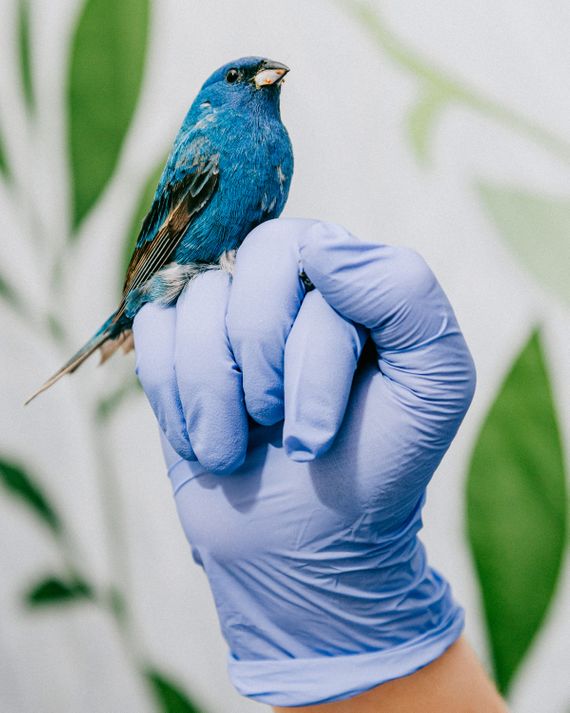
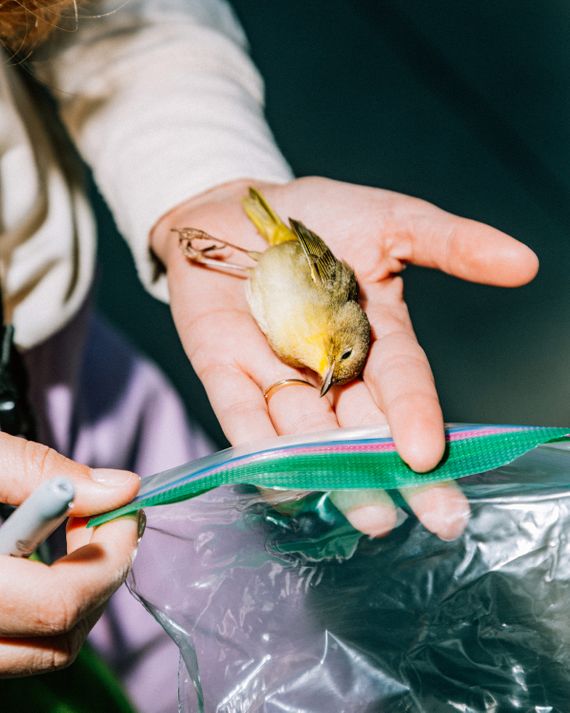
The volunteers working on Project Safe Flight do not merely collect individual dazed birds — they aim to quantify the extent of this problem. They log deaths and injuries into a New York City Audubon database called dBird. Their collected data help conservationists estimate overall collision deaths in New York City and identify problem hot spots. In doing so, they can approach buildings and policy-makers about enacting mitigation techniques.
McRae’s destination, later this morning, is the Wild Bird Fund, where she and other avian-minded good Samaritans bring the injured. A bird like that warbler is “basically suffering from a double concussion” — from hitting the glass and then landing hard on the ground below, explains Rita McMahon, Wild Bird Fund’s director and co-founder. On chilly days, which are common during fall and spring migration, unconscious birds can slip into hypothermia within moments.
When a bird EMT like McRae brings a patient into the Wild Bird Fund’s emergency room, which is on the Upper West Side, the triage process involves a lot of watching and waiting. The bird rests — “so many times, if you leave them alone, they will be fine,” McMahon said — and is given good food (like mealworms) and kept for at least 24 hours. Birds are examined by a licensed wildlife rehabber who checks their weight, species, and injuries. Treatment might include drops for an eye injury or a low-dose anti-inflammatory for head trauma. Staff and volunteers also make sure that data is logged in dBird. For critical cases,there’s an incubator in the ICU. For less severe ones, a soft-mesh-sided mini pet carrier will usually do. The birds are never caged: “They don’t know how to get out, and they’ll damage their feathers,” McMahon said. The attendants don’t let the birds fly immediately upon arrival since they could hit hard surfaces inside the clinic. Once the birds are feeling better, there are various areas at Wild Bird Fund where they can hang out together, with “perches everywhere” and sunlamps for light and warmth. “Company always makes birds feel safer — they’re in a flock, even if it’s not the same species.”
In the spring, birds that recover are released in Central Park, as they will not encounter a gauntlet of glass-covered buildings on the rest of their northward trip. In the fall, they’re taken out of town or to the edges of New York City — places like New Jersey’s Great Swamp or Breezy Point in Queens — so their southward path doesn’t take them through lower Manhattan’s maze of windows. During fall and spring migration, Wild Bird Fund might receive 30 to 50 birds in a day, but McMahon has seen days with more than 100 patients. The survival rate is “50 percent at max.” Under state law, birds deemed incapable of survival in the wild must be euthanized.
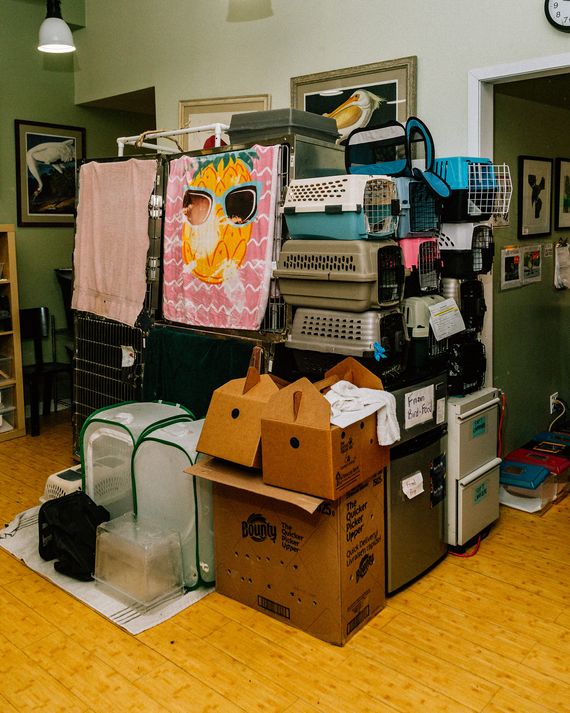
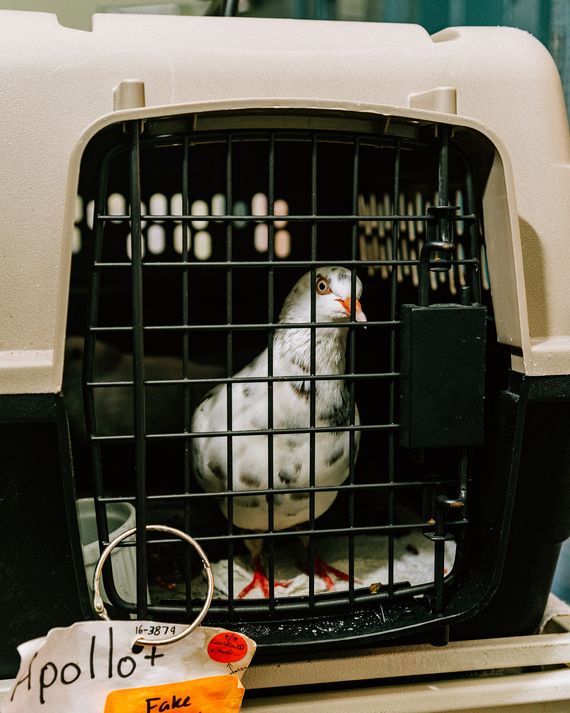
“It’s glass half-full, half-empty,” McMahon said. She called it a “cruel twist” that the New York so many enjoy is deadly to so many birds, especially young “first-timers” making their initial flight through the city in fall. “It is heart-rending to hold this natural jewel of a creature and know it is gone forever,” McMahon said.
There is only so much that a city of glass towers can do about this, but Kaitlyn Parkins, senior conservation biologist with New York City Audubon, says there are a variety of techniques that help birds recognize glass as a solid barrier. “You have to put a visual indicator on it,” Parkins said. Sometimes schoolchildren decorate exterior glass with tempera paint murals, for example. More complicated, costlier approaches might include sticking patterned film against the glass.
Earlier this year, a law went into effect requiring that bird-friendly glass be used below 75 feet, which is where most collisions occur. But the law doesn’t require existing buildings to revamp their glass unless they’re replacing “all exterior glazing,” a New York City Buildings Department memo lays out. “We stopped the bleeding, essentially, but we still have all these buildings in New York City [that] are problems for birds,” Parkins said. (A spokesperson for New York City councilmember Robert E. Cornegy Jr., chair of the Housing and Buildings committee, did not respond to questions about whether the group supports policies that would require mitigation features in existing construction.)
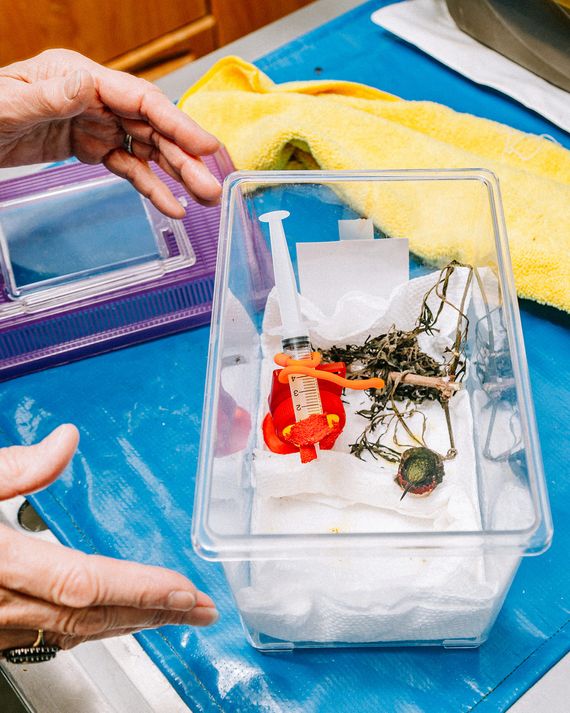
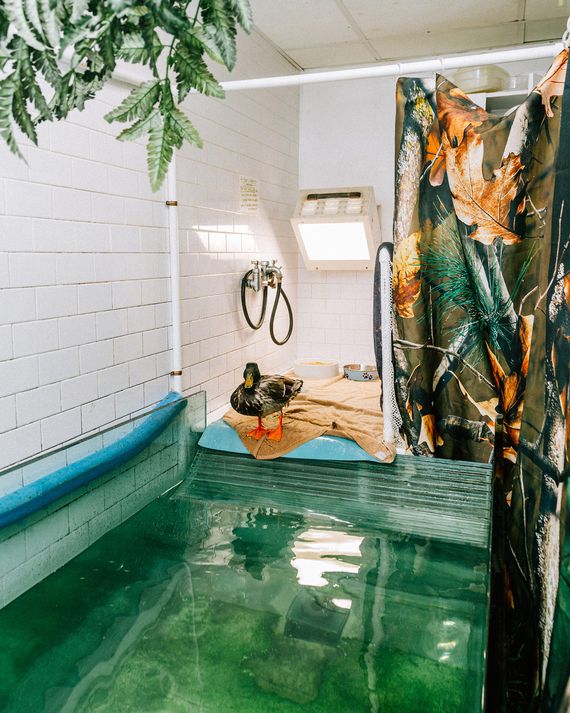
Brookfield Properties did comment when asked about bird collisions at Brookfield Place, saying: “We know waterfront buildings are particularly susceptible, especially during migration seasons. We adjust lighting levels in the Winter Garden and public spaces (and we encourage tenants to do the same) during migration seasons in an effort to minimize strikes. It’s something we take seriously and will continue to look at.” (Full disclosure: New York Magazine’s editorial offices are in Brookfield Place.) Jordan Barowitz, a spokesman for the Durst Organization, which operates, manages, and holds a minority stake in 1 World Trade, said that “the base of the building is comprised of a metal screen with glass fins that has minimal reflectivity and mitigates bird collision.” Barowitz also said: “This is a very important issue to us, and it’s something that we spend a lot of time on, working to minimize the number of bird collisions against our buildings.” Other World Trade Center buildings’ management did not respond to a request for comment.
Although McRae’s efforts are inherently Sisyphean — the way things are built now, there will always be more dead birds, and a lot of them — she isn’t cynical about the work she does. She works at a small scale, lowering her voice for rescuees’ comfort, for example, but she also sees the bigger picture. “The injured birds are really just a drop in the bucket,” McRae remarked, saying that data the group gathers could push building owners and the city to take bigger mitigation steps. Otherwise, “it’s just going to keep going on, year after year after year.”


